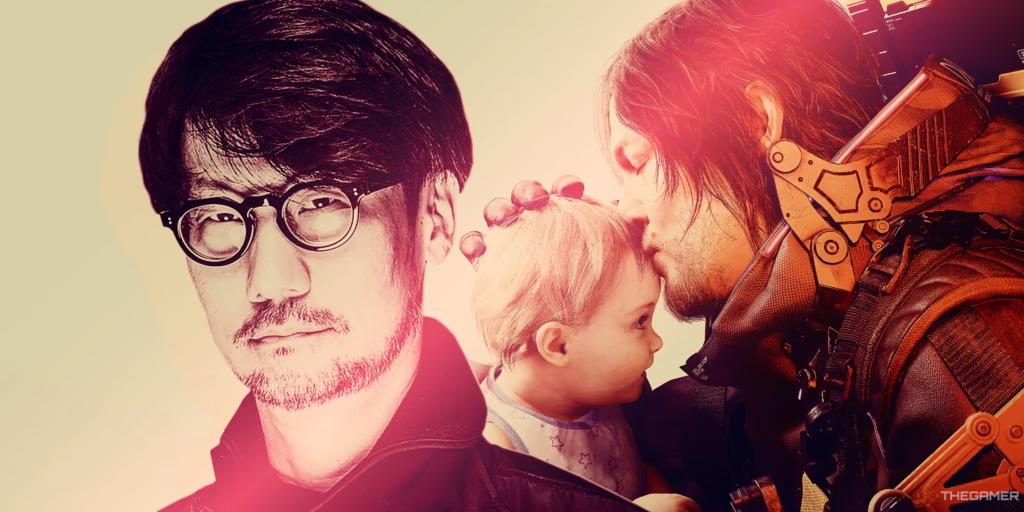Legendary game designer Hideo Kojima, best known for his cinematic storytelling in Metal Gear Solid and Death Stranding, has recently offered fans a rare behind-the-scenes look into a long-debated topic: Why are there so few Japanese actors in his games?
As excitement builds around Death Stranding 2: On the Beach, many fans have once again noticed the game’s star-studded Hollywood cast, including Norman Reedus, Léa Seydoux, Elle Fanning, and Troy Baker. The recurring question resurfaces: Why does Kojima, whose studio is based in Tokyo, continue to rely heavily on Western talent rather than Japanese actors?
In a candid and surprisingly technical interview with IGN Japan, Kojima finally addressed the issue — and his explanation offers eye-opening insight into the unique challenges of game development.
Hideo Kojima’s Real Challenge: Rendering Asian Faces in CG
Kojima explained that the core reason behind the lack of Japanese actors isn’t creative bias or lack of interest. Instead, it comes down to technological limitations. According to him, accurately recreating Asian faces — particularly those of women and younger individuals — in 3D computer graphics has historically been a major hurdle.
Asian actors often have exceptionally smooth, flawless skin, which, when scanned and rendered for a video game, can end up looking too perfect. Ironically, their natural beauty makes them appear artificial in digital form. Kojima elaborated that older individuals or people with more textured skin — like visible pores or freckles — tend to produce better results when rendered, making Western actors easier to work with using past CG technology.
“It’s really hard to recreate Asian faces accurately in CG,” Kojima noted. “Their skin is so smooth and beautiful, it ends up looking fake.”

A Technological Breakthrough – A New Hope for Representation
This doesn’t mean Kojima hasn’t tried to work with Japanese actors. In fact, he admitted that in past attempts, the final rendered visuals just didn’t look quite right. But now, thanks to advances in scanning and rendering technology, Kojima believes they’ve turned a corner.
One of the results of this breakthrough is the casting of Shioli Kutsuna in Death Stranding 2. Kutsuna, an actress of Japanese descent raised in Australia, plays the character Rainey. Her bilingual background and acting chops made her a perfect fit for the game, especially considering the second major factor Kojima outlined — language.
The Language Barrier in Performance Capture
Since the performance capture for Kojima’s games is done in Los Angeles, it’s essential that all actors speak fluent English. This allows for realistic collaboration during motion capture scenes, where actors perform together in real time.
This has naturally limited Kojima’s ability to cast actors who are not fluent in English — which, unfortunately, excludes many Japanese performers. Kutsuna was a rare find: she brought the cultural authenticity Kojima wanted, along with the linguistic ability needed for his LA-based shoots.
Not Exclusion – But Evolution
What’s refreshing about Kojima’s response is how transparently he acknowledged the limitations his team has faced. It’s not about deliberately excluding Japanese actors, but rather working within the current constraints of technology and production logistics to maintain the cinematic realism he strives for.
Still, Kojima made it clear that the situation is improving. As the technology advances and scanning processes improve, he’s optimistic about working with more Japanese talent in future projects. In fact, he even hinted at possibly setting a future game in Japan — a move that would naturally open the door for more local actors.
Looking Ahead: A More Inclusive Future for Kojima Productions
Hideo Kojima’s games have long blurred the lines between cinema and interactive storytelling. His attention to visual fidelity, emotional realism, and immersive performance is unmatched — but now, it seems that the tools are finally catching up with his vision.
With the success of Death Stranding and the upcoming sequel pushing the boundaries of gaming technology, fans can expect to see a broader mix of talent in future titles — potentially with more Japanese actors finally getting their due in Kojima’s high-profile projects.
As Kojima himself said, “Things are changing.”
And for fans of diverse representation and cutting-edge storytelling, that’s something worth getting excited about.
Stay tuned with UState Pulse for more updates on Death Stranding 2 and Kojima’s evolving creative journey